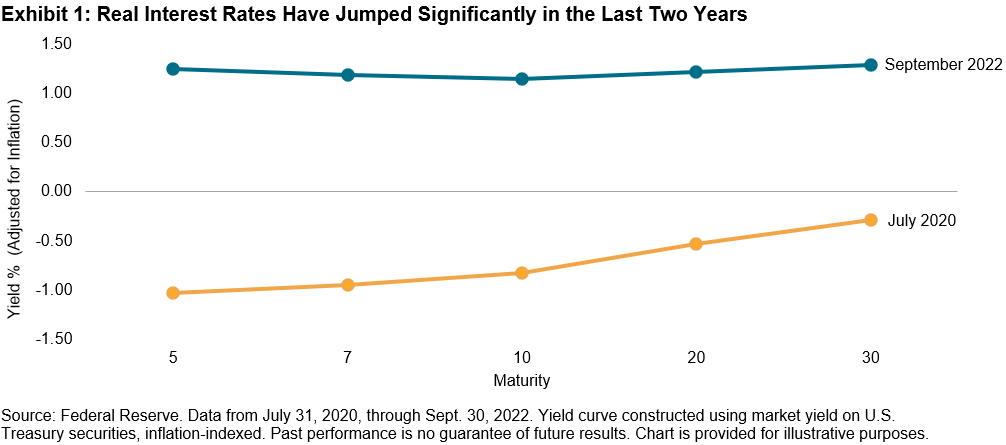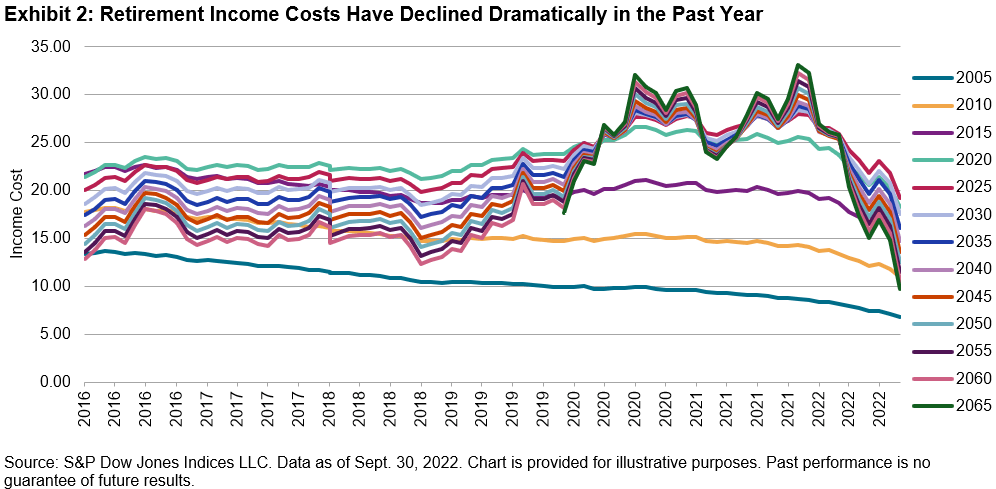Dilok Klaisataporn
By Fei Mei Chan
When it rains, it pours, and there’s no lack of bad news in 2022. The equity market is in solid bear territory, with the S&P 500® down 22% YTD. Inflation is high, and the Federal Reserve has aggressively hiked interest rates in recent months. The latest cycle of rate increases has happened faster than at any time since 1988. Rates have increased in both nominal and real (inflation-adjusted) terms. The current real yield curve sits significantly higher than at its most recent trough in July 2020.

Higher interest rates are often perceived to be bad for equity performance. Although it doesn’t always work out that way, this year, that prediction has come to fruition. Poor equity returns, other things being equal, are unpleasant for investors’ retirement portfolios. But generating returns is just one aspect of providing retirement security. An equally important aspect is to convert those cumulative returns into a sustainable, inflation-adjusted income stream. The S&P STRIDE Index Series is designed to facilitate both income generation and preserve purchasing power.
Targeting a dollar value of portfolio assets by retirement is aspirational. But budgeting for a stream of consumption costs post-retirement is actionable. The S&P STRIDE Series indicizes retirement income plan structures traditionally offered by annuities or defined benefit plans. Income costs are discounted back to today’s value using real interest rates. Higher rates imply lower costs of generating retirement income.
Our quarterly S&P STRIDE Dashboard provides regular updates on changes in the cost of retirement income. Exhibit 2 shows the cost for a dollar of retirement income for each of the 13 vintages that the S&P STRIDE Indices track.

Since real interest rates have risen dramatically in the past year, the cost of retirement income has declined significantly (lowest since 2015), particularly for longer-maturity vintages.
Additional resources:
Introducing the S&P STRIDE Index Series
Making STRIDEs in Evaluating the Performance of Retirement Solutions
Disclosure: Copyright © 2022 S&P Dow Jones Indices LLC, a division of S&P Global. All rights reserved. This material is reproduced with the prior written consent of S&P DJI. For more information on S&P DJI please visit www.spdji.com. For full terms of use and disclosures please visit Terms of Use.
Editor’s Note: The summary bullets for this article were chosen by Seeking Alpha editors.


Be the first to comment